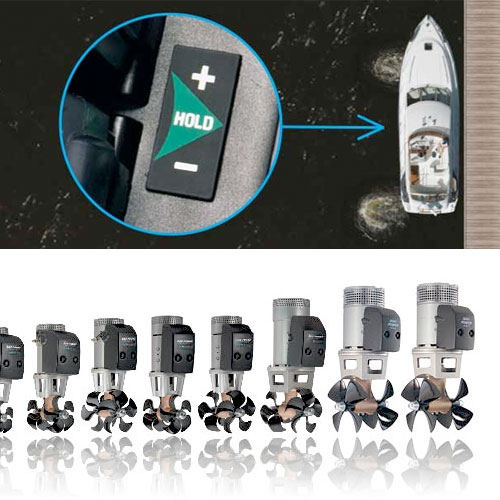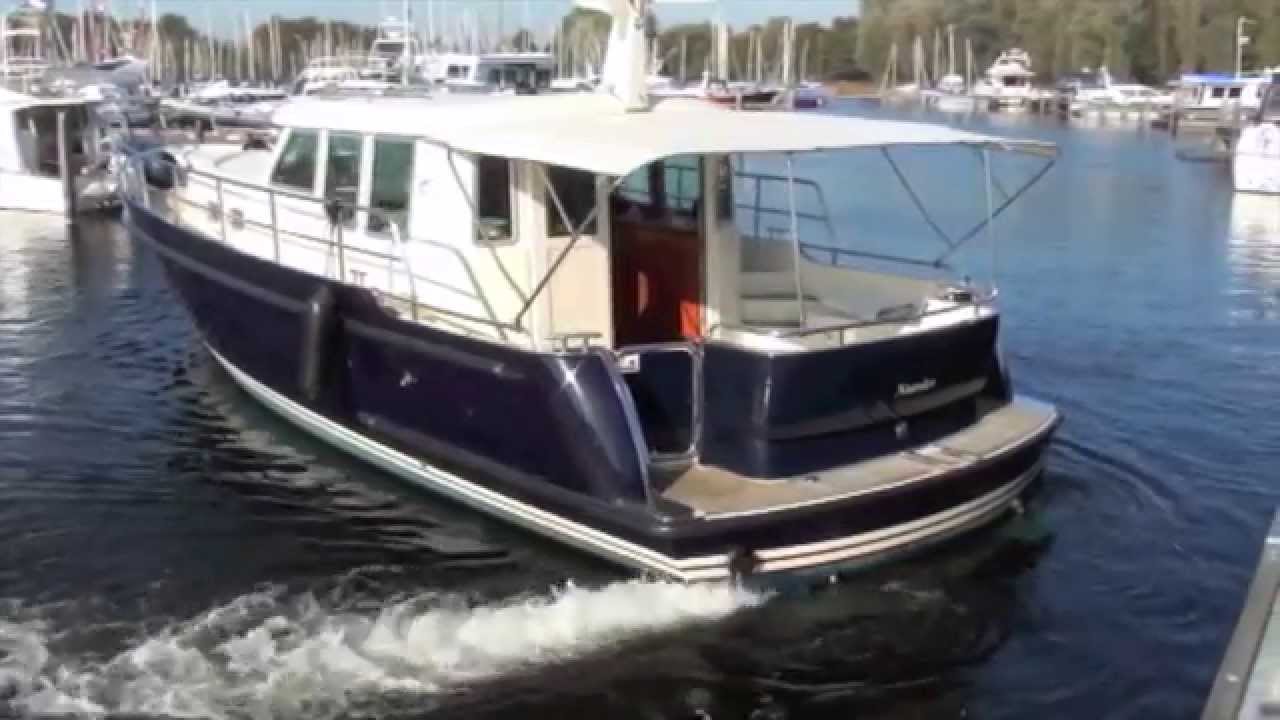Bow & Stern Thrusters
Installation of a bow thruster can mean greater confidence at the helm, safer docking, and more time on the water. If you’ve been wondering if you should install one, here’s a look at the basics of bow thrusters to help you decide if installing one is right for you.
A boat thruster is simply a propulsion device located at the bow or stern that provides lateral (port and starboard) thrust, making the vessel more maneuverable. Bow thrusters often come as standard equipment on newer pleasure boats over 45 feet, but almost any midsize vessel can be retrofitted. The benefits of having a bow thruster are many, particularly for boaters who must routinely deal with gusty winds, strong currents, or crowded docking spaces. Maneuvering in tight areas is much easier, as a thruster allows the operator to turn the vessel to port or starboard without forward motion. This is particularly helpful with high-windage powerboats or sailing vessels with long, full keels.
Another benefit is the greater level of independence and confidence a thruster can offer, both to beginner and experienced boaters alike. Novice operators are more likely to actually get underway in more challenging conditions, while experienced captains can expand their options (sailing solo, for example) with greater safety. In both cases, installing a bow thruster is like recruiting a trusted crewmember, one that’s always ready to lend a hand when pushing (or fending) off from a dock.
Choosing A Bow Thruster
Installing a thruster can involve some major surgery, depending on the type selected and the design of your particular vessel. As such, you’ll want to thoroughly research the various options available in order to select the one that’s right for you.
Selecting a unit that’s powerful enough to meet your performance requirements while matching the characteristics of your boat (type, size, hull shape) is crucial to getting the most benefit from your installation. Thruster performance is determined primarily by a vessel’s windage and correct thruster location. Vessel weight is not typically a major factor in thruster selection for pleasure craft, unless they routinely operate in areas where the thruster will be constantly needed to counter strong currents or winds.
Some companies allow you to select a unit based on vessel characteristics such as length and displacement, but it’s always a good idea to get a second opinion from a professional, particularly if dealing with unusual installation requirements. Once you decide to install a thruster, you’ll need to make several choices including power source, mounting type, and number of propellers.
For more information or to request a quote please complete our REQUEST FORM. For general inquiries please use our CONTACT FORM.


A wireless control unit adds more convenience, allowing you to move around the boat while controlling the thruster. Imagine picking up that mooring ball with minimal effort (and shouting) or boarding without having to pull on a single dockline, bringing the boat to you with the push of a button.

